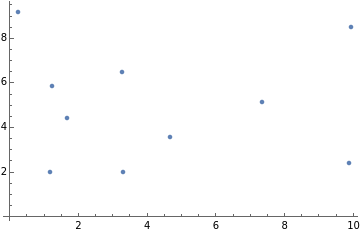Level 2: Applied Expertise
Grading Rubric
In order to obtain the Wolfram level 2 certification for applied expertise in neural networks, the applicant must successfully complete an independent project that demonstrates expertise in constructing a neural network and using it to explore a dataset or solve a problem, then submit a project report in the form of a Wolfram Notebook, with the required certification fee. Submissions are graded according to the following rubric. Level 2 certification requires a project score of 75 or greater.
Network Construction (75 points)
Network Construction (75 points)
Question (5 points)
Question (5 points)
Acquire your data and define a specific question or questions about this data that will be answered by the end of the project.
List questions that are well motivated and interesting.
Explain why there is some importance to the answers to these questions.
Create or Modify (20 points)
Create or Modify (20 points)
Create
Create encoders and decoders.
Choose your layers and explain the purpose of each layer.
Make sure to explain the construction of your network—why have you structured it the way you have?
Modify
Take a pre-built network either from the lectures and explorations from Neural Networks Boot Camp or from the Wolfram Neural Net Repository. (Be very clear about the source of your starting network.)
Modify the network as you see fit—for example, changing encoders or decoders, cutting out or adding certain layers, pruning or other substantive changes.
Explain the mechanics of your modifications and their intended goal.
Train (15 points)
Train (15 points)
Split your data up into training and test sets. Use the test set to train your network.
Explain your choice of training vs. testing data as well as any data augmentation (e.g. rotating or reflecting image inputs) that you might have done.
Test Functionality (10 points)
Test Functionality (10 points)
Test your network on a subset of your data to see how it performs.
Provide results of evaluating your model according to performance metrics, with the help of NetMeasurements.
If the results are not what you expect, explain why this might be and what changes you will make in order to improve the performance of your network.
Iterate as necessary.
Apply (5 points)
Apply (5 points)
Use your completed network on your data.
Show the relevant outputs in whatever format makes sense for your data.
Communicate (20 points)
Communicate (20 points)
Convey the final results of your analysis clearly.
This section of the project will be graded on:
Visual appeal
Informativeness
Quality of design
Reproducibility (25 points)
Reproducibility (25 points)
Code (10 points)
Code (10 points)
Make sure the notebook is self-contained. (It should be possible for us to run the code without any external file dependencies.)
Organize and indent code for readability.
Remove incomplete/irrelevant code snippets (used to try out ideas while developing the workflow) from the final notebook.
Revise and rewrite code to make it simple and straightforward. One rule of thumb is to make a cell no more than three lines of code; cells with complicated, lengthy code should be broken up into multiple segments or cells.
Name variables and functions according to their purpose in the code. Avoid generic names like “var123” or “myFunction.”
Include comments to explain exactly what is being done by the code.
Either use comments such as:
(*thisisacomment*)
Or use a cell in CodeText style preceding the cell with the code:
Create a scatter plot of feature 1 vs. feature 2 using ListPlot:
In[]:=
ListPlot[RandomReal[10,{10,2}]]
Out[]=
Explanations and Comments (10 points)
Explanations and Comments (10 points)
Include relevant, concise text explanations to describe every stage of the project workflow.
Include explanations regarding specific decisions on the choice of algorithms, techniques, values of parameters and any other choices you make.
Use simple examples and visualizations to illustrate reasoning that may be unclear at first glance.
References (5 points)
References (5 points)
Provide links to existing published research as references.
If this project builds on someone else’s work or attempts to provide comparative analysis, highlight the work in a reference.

